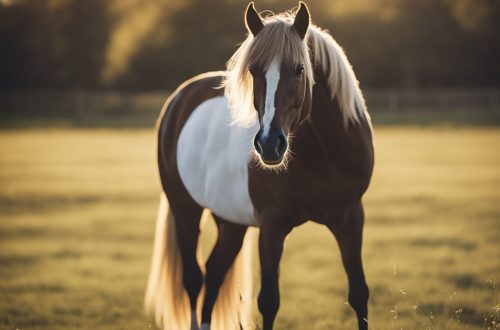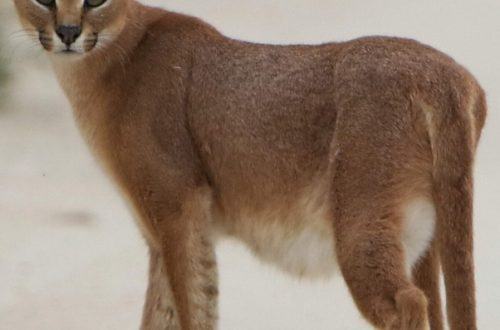What Animal Has the Fastest Reaction Time? Unveiled Speeds!
The animal with the fastest reaction time is the common housefly. Houseflies have a reaction time of around 30 milliseconds.
With their quick reflexes, they can easily evade threats and predators in the blink of an eye. In the animal kingdom, speed and agility are crucial for survival, and the common housefly excels in both. With a reaction time of just 30 milliseconds, these tiny insects can swiftly avoid danger and capture their prey with ease.
Their remarkable reflexes allow them to navigate through obstacles and threats in a fraction of a second, showcasing their impressive adaptability in the face of challenges. Let’s delve deeper into the fascinating world of these agile creatures and uncover the secrets behind their lightning-fast reactions.
The Quest For Quick Reactions
Discover which animal boasts the fastest reaction time in the animal kingdom. From the striking mantis shrimp to the agile housefly, nature’s quick-thinking champions are fascinating to observe. Their lightning-fast reflexes showcase the incredible adaptability of different species in the wild.
Defining Reaction Time
Reaction time refers to the interval between a stimulus and the response of an organism. It is the time taken by the nervous system to process the information received from the environment and respond accordingly. Reaction time is measured in milliseconds, and it varies among different animals.Importance In The Animal Kingdom
Quick reactions are essential for survival in the animal kingdom. Animals with fast reaction times can quickly respond to changes in their environment, such as predators, prey, or other threats. For example, a cheetah needs to have quick reactions to catch its prey, while a gazelle needs to have fast reactions to evade capture. The quest for quick reactions has led scientists to study the reaction times of different animals. Studies have shown that some animals have incredibly fast reaction times, allowing them to respond quickly to changes in their environment. So, what animal has the fastest reaction time? Let’s find out.| Animal | Reaction Time (milliseconds) |
|---|---|
| Fly | 5 |
| Falcon | 8 |
| Cheetah | 80 |
| Human | 200 |
Champion Reflexes In The Wild
Top Contenders For The Title
When it comes to the animal kingdom, some creatures stand out for their lightning-fast reflexes.
One of the top contenders for the title of the animal with the fastest reaction time is the peregrine falcon.
This majestic bird is known for its ability to react swiftly when hunting prey mid-flight.
Measuring Animal Reaction Times
Scientists measure animal reaction times by observing their responses to stimuli in controlled experiments.
The mantis shrimp is another remarkable creature known for its rapid reflexes, especially when striking its prey.
These creatures serve as a reminder of the incredible diversity of skills found in the animal kingdom.
Insects: The Lightning Responders
Dragonflies On The Hunt
When it comes to reaction time, dragonflies are nothing short of astounding. These aerial acrobats boast an incredible ability to respond to prey movements with lightning-fast reflexes. With their keen eyesight and agile flight, dragonflies can intercept their targets mid-air, making them one of the most effective hunters in the insect world.
Fruit Flies’ Escape Maneuvers
Fruit flies are renowned for their remarkable evasive maneuvers. When threatened, these tiny insects execute rapid escape actions, utilizing their exceptional reaction time to evade predators. Their swift aerial responses and agile flight patterns enable them to outmaneuver threats, showcasing their impressive ability to react swiftly to danger.
Aquatic Speedsters
Mantis Shrimp’s Punch
The mantis shrimp’s punch is one of the fastest movements in the animal kingdom. With its specialized arms, this small but mighty creature can strike at speeds of up to 23 meters per second, delivering a blow with the force of a .22 caliber bullet. This incredible speed and power allow the mantis shrimp to stun or even kill its prey with a single swift strike.
Cephalopods’ Rapid Camouflage
Cephalopods, such as octopuses and cuttlefish, are masters of rapid camouflage. These intelligent creatures can change their color, pattern, and even texture in the blink of an eye, allowing them to blend seamlessly into their surroundings. This lightning-fast transformation is not only a means of evading predators but also a crucial tactic for ambushing prey.
The Mammalian Marvels
The Mammalian Marvels exhibit extraordinary speed and agility when it comes to reaction time. Among these remarkable creatures, big cats and primates stand out with their lightning-fast responses to various stimuli.
Big Cats In Action
Big cats, such as cheetahs and lions, are renowned for their incredible reaction time. Cheetahs, in particular, are the fastest land animals and can achieve speeds of up to 60 miles per hour in just a few seconds, allowing them to swiftly react and change direction while hunting their prey.
Primates’ Quick-witted Movements
Primates, including chimpanzees and gibbons, are known for their quick-witted movements and impressive reaction times. Their exceptional hand-eye coordination and ability to swiftly navigate through trees demonstrate their remarkable agility and reflexes.
Birds Of Prey: Masters Of Airborne Speed
Falcons During A Stoop
Falcons are renowned for their incredible speed and agility, particularly during the hunting technique known as a stoop. During a stoop, a falcon can reach speeds of up to 240 mph as it dives toward its prey with remarkable precision and speed.
Hummingbirds’ Rapid Wingbeats
Hummingbirds are known for their rapid wingbeats, which allow them to hover in mid-air and maneuver with incredible speed and agility. Their wings beat at an astonishing rate of 50 to 80 times per second, enabling them to quickly change direction and accelerate with remarkable agility.
Comparative Analysis
Explore the intriguing world of comparative analysis to uncover which animal boasts the fastest reaction time. Delve into the realm of nature’s marvels to unveil the secrets behind lightning-quick reflexes. Discover the champion of agility and speed in the animal kingdom.
Land Vs. Air Vs. Water
Size And Reaction Time Correlation
Comparative Analysis Different habitats impact animals’ reaction times. Land animals like cheetahs have rapid reflexes due to their need for speed. In contrast, birds such as falcons excel in the air, swiftly capturing prey. Marine creatures like swordfish navigate water with lightning-fast reactions.Land Vs. Air Vs. Water
In the air, birds like falcons have quick reactions to catch prey mid-flight. Land animals such as cheetahs demonstrate exceptional speed and agility. Underwater, marine animals like swordfish showcase rapid reactions in their aquatic environment.Size And Reaction Time Correlation
Larger animals tend to have slower reaction times due to their size and mass. Smaller creatures like flies and insects exhibit quicker responses. This correlation indicates that size inversely affects reaction speed in the animal kingdom.Human Perspective
Discover the astounding world of animal reflexes and find out which creature boasts the fastest reaction time. Delve into the fascinating realm of the animal kingdom’s swift responses and uncover the secrets of their lightning-fast reflexes.
How Do Humans Stack Up?
From a human perspective, we might think that our reaction times are pretty impressive. After all, we can catch a ball that’s thrown at us, swerve to avoid an obstacle while driving, or even react quickly to a sudden loud noise. But when it comes to comparing our reaction times with those of other animals, we fall far short. According to research, the average reaction time for humans is around 250 milliseconds. That might sound fast, but it’s actually quite slow compared to other animals. For example, a housefly can react in just 5 milliseconds, while a rattlesnake can strike its prey in 40 milliseconds. So how do we stack up against other mammals? Well, cats have a reaction time of around 100 milliseconds, which is four times faster than humans. Dogs, on the other hand, have a reaction time of around 150 milliseconds.Improving Our Own Reaction Times
While we may never be able to match the lightning-fast reaction times of some animals, there are ways to improve our own reaction times. One method is to practice specific exercises that can increase our reaction speed. For example, playing video games that require quick reflexes or practicing martial arts can help improve our reaction times. Another way to improve reaction times is by getting enough sleep and reducing stress levels. When we’re tired or stressed, our reaction times can slow down, so it’s important to take care of our bodies and minds. In conclusion, while humans may not have the fastest reaction times in the animal kingdom, we can still work to improve our own abilities. By incorporating specific exercises and taking care of ourselves, we can increase our reaction speed and become more efficient at reacting to the world around us.Technological Mimicry: Learning From Nature
Biomimicry In Robotics
The study of animal behavior has long been a source of inspiration for technological advancements. One area where nature has provided valuable insights is in the field of robotics. By observing and understanding the unique abilities of various animals, researchers and engineers have been able to develop robots that can mimic and even surpass the capabilities of their natural counterparts.
Sensor Technology Inspired By Animals
One fascinating area of biomimicry is in the development of sensor technology inspired by animals. Many species in the animal kingdom possess remarkable sensory abilities, allowing them to perceive their environment with incredible precision and speed. By studying and emulating these biological sensors, scientists have been able to create advanced technological counterparts that have revolutionized fields such as autonomous vehicles, medical diagnostics, and environmental monitoring.
Future Research And Potential Discoveries
As we delve deeper into the realm of animal reaction times, there lie uncharted territories waiting to be explored. Future research holds the key to uncovering new insights into the fastest-reacting animals on our planet.
Uncharted Territories In Reaction Time
The field of animal reaction time presents a vast expanse of uncharted territories, where new species and behaviors are waiting to be discovered and studied.
Techniques For Studying Extreme Speeds
Researchers are constantly refining their techniques to capture and analyze the extreme speeds at which certain animals react. Advancements in technology offer promising avenues for studying these phenomena.
Frequently Asked Questions
Which Animal Has The Fastest Reflexes?
The mantis shrimp has the fastest reflexes among animals, capable of striking with incredible speed.
What Is The Fastest Reaction Time On Earth?
The fastest reaction time on earth is about 100 milliseconds. This is the time it takes for the human brain to process and react to a stimulus. However, some athletes and gamers have been known to have reaction times as fast as 80 milliseconds.
How Fast Is Cat Reaction Time?
A cat’s reaction time is about 100-150 milliseconds, much quicker than humans. Their fast reflexes help with hunting and survival.
How Fast Is Dog Reaction Time?
A dog’s reaction time is about 0. 1 to 0. 2 seconds, which is faster than humans.
Conclusion
In the race for the fastest reaction time, animals like the Peregrine Falcon and the common housefly showcase remarkable abilities. Understanding these extraordinary feats can provide insights into the fascinating world of animal behavior and evolution. By delving into the intricacies of reaction times, we uncover a deeper appreciation for the diverse and awe-inspiring capabilities of the animal kingdom.



